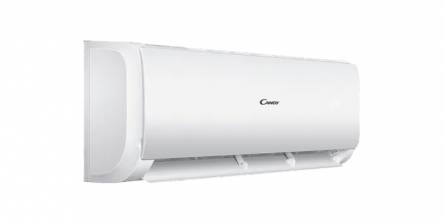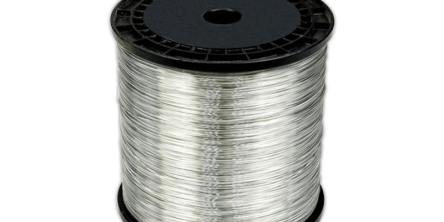5 Ways Industrial Switches Enhance Efficiency of Industrial Automation

Industrial automation has become omnipresent in modern production plants. It is indispensable in optimizing different processes and maximizing productivity while minimizing costs. This is the foundation of a robust and reliable network infrastructure at the heart of any industrial automation system, ensuring effective communication with different devices and control systems.
Industrial switches ensure the possibility of establishing such an infrastructure to guarantee an adequate flow of information in real time throughout the automation ecosystem.
With increased digitization, the requirements for most industrial processes become data-driven, leading to growing network demands. Industrial switches are designed to meet the highest demands, offering customers reliable connectivity and security features that assure steadfast operation in harsh industrial environments.
Therefore, industrial switches greatly enhance industrial automation efficiency by optimizing data transmission and integrating heterogeneous systems.
1. Reliable Connectivity for Critical Systems
For consistent performance, industrial operations depend on flawless monitoring and synchronization between core machinery, HMIs, PLCs, and sensors. The smallest network disconnection at any industrial point includes the potential risk of severe threats like downtime, material wastage, and safety hazards. Through robust hardware architectures, an industrial switch establishes highly reliable Gigabit Ethernet connections between different devices.
These vital characteristics include redundant power supplies, fault-tolerant port modules, MRP rings, and advanced remote management functionalities. The feature also supports automatic dual-homing capabilities that automatically re-route traffic due to cable cuts or switch failure in a bid to reduce the time needed to repair. Most switches will also provide pre-wired redundancy links to increase the chances of surviving a network outage.
Industrial switches are designed with ultra-high ports and network availability of over 99.999%. They help manufacturing facilities achieve the 99.99% uptime that most industries demand. This reliable connectivity is the basis for glitch-free, seamless operation of control systems.
2. Real-time Data Exchange for Streamlined Processes
Industrial switches, configured with low-latency ports, enable users to experience a near-real-time event, where no perceivable delay occurs. This leads to an instant response from the machine, which is the most important feature for all high-speed production lines in electronics, automotive, and many other industry sectors. Distributed network architectures using multiple switches with latency-optimized stacking enhance the scalability of real-time data communication for large industrial installations.
Industrial switches can pass thousands of volumes of data from CCTV systems, asset trackers, and vibration sensors, supporting a high-speed bandwidth of up to 100G. This means that interweaving data between operational technology and information technology domains allows one to maximize the processes by implementing features like real-time predictive maintenance, dynamic production scheduling, and quality monitoring.
Real-time data across the factory through a single conduit, lean work processes driven by industrial switches, reduce changeovers, minimize downtime from unplanned outages, and maximize asset utilization to boost key performance metrics directly.
3. Interoperability Across Diverse Systems
Modern plants have devices sourced from several vendors, requiring interoperable connections. Industrial switches have native support of open communication protocols, such as PROFINET, EtherNet/IP, Modbus TCP, and OPC UA. This eliminates integration barriers among brands of different automation systems.
It allows improved protocol conversion; in other words, translation between protocols which permits cohabitation between legacy machines and new systems on a single network. Predefined EDS files enable drag-and-drop configuration, even with heterogeneous devices. Support for OPC-UA is natively included, even for non-IP field devices like analog sensors.
This ensures the seamless interoperability of the various elements and short commissioning cycles, future-proofing infrastructure against technology obsolescence. The system also allows flexible machine upgrades without a rip-and-replace approach. This reduces the total cost of ownership over time by large margins while maximizing the return on capital assets.
4. Enhanced Security for Critical Infrastructure
Industrial networks handles sensitive operational, product design, and customer personal data. Targeted attacks can disrupt production systems, steal intellectual property, and damage brand reputation. To protect network integrity, industrial switches incorporate multiple layers of security, including port security, user access control, encrypted protocols, event logging, and regular firmware/OS updates.
Advanced functions like network access control validate connecting devices against a database of approved MAC addresses. Network behavior anomaly detection and flow monitoring systems detect threats in real-time. Encrypted communication standards like IPsec VPN tunnels protect data confidentiality. Comprehensive user authentication and packet inspection rules block unauthorized access attempts.
These multi-pronged security measures shore up plant cyber defenses compared to traditional IT solutions. They shield automation systems from modern threats while maintaining non-stop production uptime.
5. Resilience for Harsh Industrial Environments
Automation networks operate in harsh environments for electronics, including broad temperature changes, caustic fumes, oils, and dust. Industrial switches must tolerate this and are rugged into metal housings, up to IP65/67 ratings, conformal coating on boards, vibration-resistant components, and operating temperatures from -40°C to 75°C as standard.
Hardened construction techniques increase the product's lifespan even in harsh environments, such as offshore oil rigs. Easy DIN-rail mounting enables easy installation without losing durability. Failure isolation capability localizes the device's fault without network interruption.
Such resilient designs maintain uptime even in adversities, keeping industrial facilities and the workers within them safe and productive. In other words, the industrial switches make a sturdy backbone networking infrastructure critical to automation reliability.
Final Thoughts
Industrial switches engineered specifically for automation play a transformative role in elevating industrial network performance.
Critical attributes like ruggedized designs, real-time communication abilities, interoperability across systems, and multi-layered security comprehensively improve efficiency, productivity, asset utilization, and overall equipment effectiveness across manufacturing facilities.
Similar Articles
Discover why spring-loaded pogo pins are essential in modern electronics, offering reliable, durable connections that boost performance in diverse applications.
Smart TVs have revolutionized the way we consume entertainment. With advanced technology and diverse functionalities, they have become a staple in modern homes. Among the numerous options available, an Android smart TV stands out for its unique features and flexibility, offering an immersive viewing experience
When shopping for an amplifier for sale, it's important to understand what "budget-friendly" really means. A budget-friendly amplifier doesn't necessarily imply poor quality or limited features
Inverter air conditioners have gained significant popularity over the past few years due to their energy efficiency and superior performance compared to traditional air conditioners. However, with this rise in popularity, various myths and misconceptions have also emerged.
In the age of interconnected devices and smart technology, the humble television has evolved from a mere entertainment appliance to a central hub within the modern home ecosystem. With the advent of smart LED TVs, homeowners now have the opportunity to seamlessly integrate entertainment, connectivity, and automation into their living spaces.
It is true to say that technology has transformed our lives in many positive ways and although there are people out there who think that technology is ruining society, in the vast majority of cases, only good things are happening. The introduction of the Internet has changed how we go about our daily lives, how we do our jobs and how we do our shopping
In today's fast-paced world, where the roads are more congested than ever, the significance of au
Extension cords are the type of items you are bound to find in any home or workplace.
For any wire compound, there are multiple methods of increasing electrical conductivity, and durability is one of them. Tin plating copper wire has been a common technology for decades. With a relatively simple manufacturing process, tin-plated copper wire provides several advantages over bare copper.









